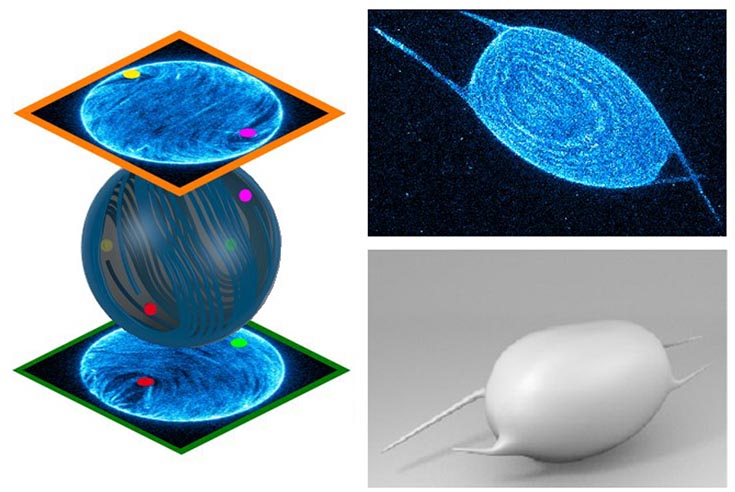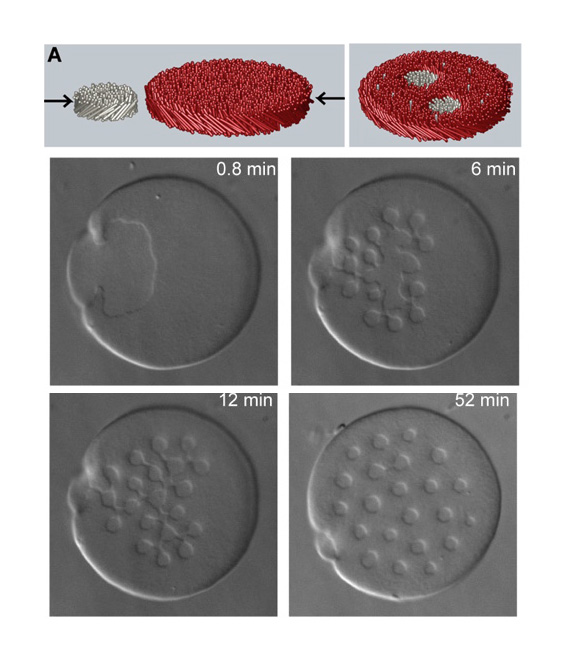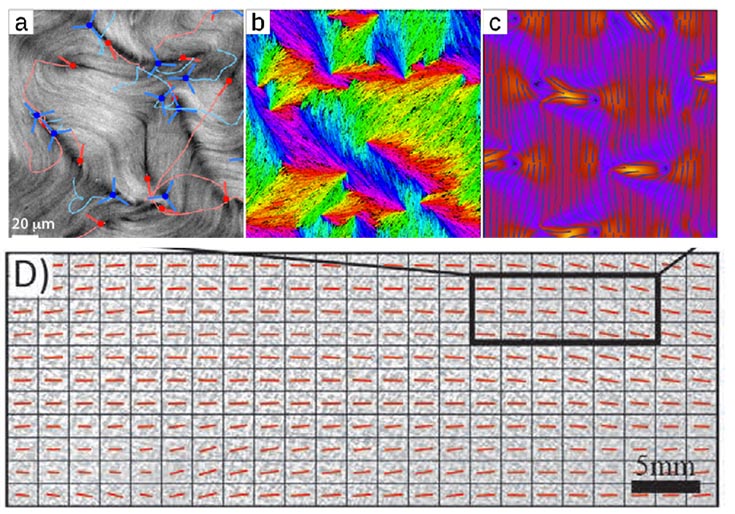2015 Research Highlights

Left: 3D reconstruction of an active nematic vesicle. Motile defect oscillate between planar and tetrahedral configuration. Right: Tuning vesicle tension through osmotic stress induces formation of four fillopodia-like structures.
Engineering synthetic materials that mimic the remarkable complexity of living organisms is a fundamental challenge in science and technology. We studied the spatiotemporal patterns that emerge when an active nematic film of microtubules and molecular motors is encapsulated within a shapechanging lipid vesicle. Unlike in equilibrium systems, where defects are largely static structures, in active nematics defects move spontaneously and can be described as self-propelled particles. The combination of activity, topological constraints, and vesicle deformability produces a myriad of dynamical states. We quantitatively described two dynamical modes: a tunable periodic state that oscillates between two defect configurations, and shape-changing vesicles with streaming filopodialike protrusions. These results demonstrate how biomimetic materials can be obtained when topological constraints are used to control the nonequilibrium dynamics of active matter.

Liquid–liquid phase separation in bulk proceeds through the continuous coalescence of droplets until the system undergoes complete phase separation. But when colloids, nanoparticles or proteins are confined to interfaces, surfaces or membranes, their interactions differ fundamentally from those mediated by isotropic solvents, and this results in significantly more complex phase behaviour. We have show that liquid–liquid phase separation in monolayer membranes composed of two dissimilar chiral colloidal rods gives rise to thermodynamically stable rafts that constantly exchange monomeric rods with the background reservoir to maintain a self-limited size. Our observations demonstrate a robust membrane-based pathway for the assembly of monodisperse membrane clusters that is complementary to existing methods for colloid assembly in bulk suspensions.

Experiments and modeling of active nematics reveal a novel defect-ordered phase, in which motile topological defects exhibit system-spanning orientational order. Such a defect-ordered phase, which has never before been observed in an active system, could enable new material properties such as macroscale flow, self-healing or spontaneous generation of work.
(A-C) Observation of topological defects in experimental and model active nematics. (A) LC-Polscope image of an extensile microtubule system. Defects are identified by red arrows and blue crosses. (B) Snapshot from a computational model of extensile rods. Rod orientations are indicated by color. (C) Director field predicted from a continuum theory description of active nematics. (D) Macroscale motile aligned defect phase. An LC-PolScope image of a microtubule sample with dimensions 6cm x 2cm is shown. The thick red lines indicate the mean orientation of defects within each grid point (delineated by then black lines), demonstrating that defects are aligned on cm-scales.

